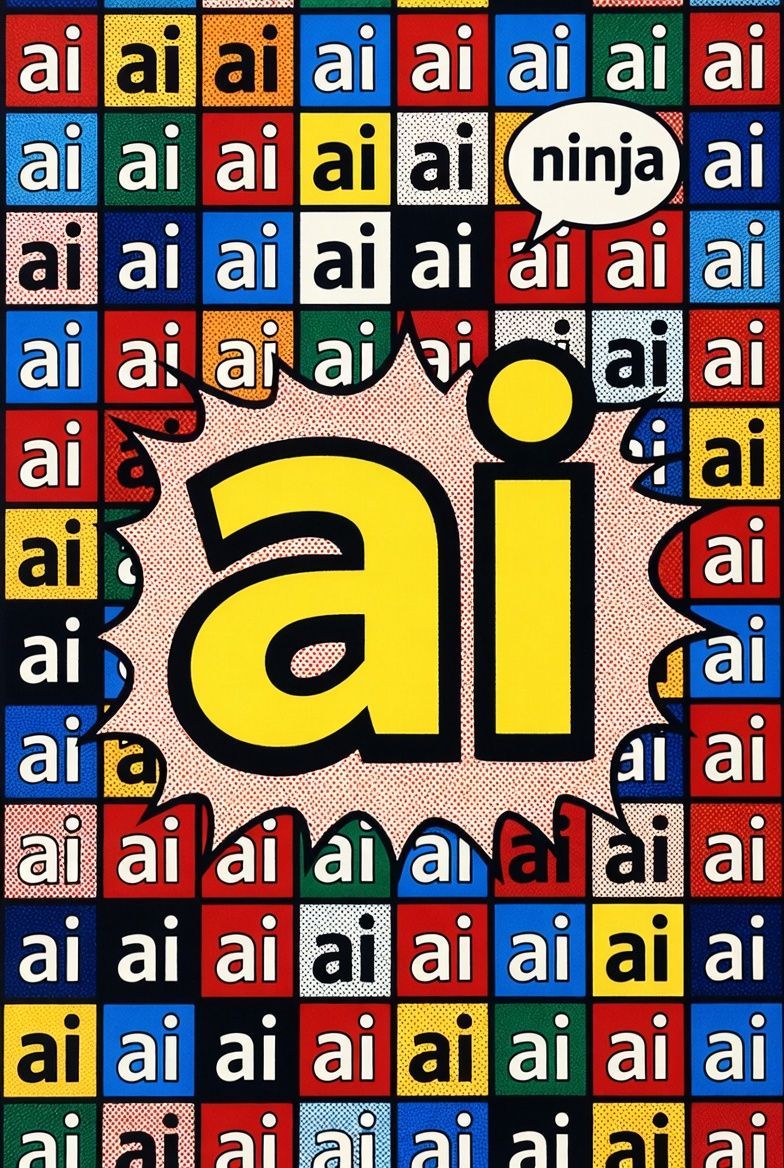West Palm Beach and Delray Beach AI Main Streets | NinjaAI
West Palm Beach & The Treasure Coast: Florida’s Quiet Power Corridor
TL;DR
The Palm Beach–Treasure Coast region has quietly become one of America’s most powerful small-business ecosystems. The migration of wealth and talent from the Northeast has fused with Florida’s entrepreneurial culture to create a stretch of coast where med-spa owners, builders, accountants, yacht brokers, and creative agencies compete not for foot traffic but for AI visibility. NinjaAI.com helps those businesses turn real-world credibility into structured, machine-verified authority — the currency of the new search economy.
1. The Coast’s Economic Identity
West Palm Beach doesn’t sell flash; it sells confidence. Its economic foundation was poured by Henry Flagler more than a century ago, but the new Palm Beach story is digital capital — remote founders, hedge-fund families, and health entrepreneurs building legacies in the sun.
Why is the region booming? Because it offers what no other Florida metro quite balances: lifestyle, security, and scalability. Wealth creates demand stability; migration fuels innovation. When New York finance moved south during the pandemic, it brought service providers, consultants, and tech vendors in tow. Add zero income tax and warm winters, and the result is a self-sustaining market of high-intent customers who live and spend locally.
The Treasure Coast to the north follows suit but on a human scale. Jupiter, Stuart, and Port St. Lucie offer affordability and authenticity. Professionals priced out of Miami find community here. Their presence reshapes commerce — every newcomer hires a contractor, a CPA, and a physician. Local entrepreneurs who learn to appear first in AI search now capture that endless inbound demand.
2. Neighborhoods as Economic Engines
Clematis Street and the West Palm Waterfront form the region’s civic heart — an intersection of finance, fine dining, and boutique law. Boca Raton hums with corporate wealth: fund managers, med-spa chains, and early-stage tech. Delray Beach plays host to nightlife and creative energy. Jupiter and Tequesta thrive on marine trades and family services, while Port St. Lucie anchors the trades — electricians, HVAC, and builders serving explosive suburban growth.
Which neighborhoods matter most for business visibility? The ones with narrative density. Boca and Downtown West Palm have the highest concentration of professionals, meaning fierce competition for search real estate. Delray’s hospitality strip depends on AI trip planners — if a restaurant isn’t structured in those engines, it’s invisible. Jupiter’s small-town luxury vibe rewards high-trust professionals: orthodontists, yacht mechanics, landscapers. In Port St. Lucie, first-mover advantage is wide open; hundreds of contractors still have no structured presence at all.
3. The Industries That Shape the Coast
Finance and professional services lead, followed by healthcare, real estate, construction, and hospitality.
Which sectors lead and why? Finance and law dominate because migration imported clients who need asset management and legal services. Healthcare — especially aesthetic medicine — is exploding as affluent populations age in place. Real estate and construction follow population curves, and hospitality provides the cultural glue.
Can smaller businesses compete with large firms? Yes — AI flattens scale. Visibility depends on structured data accuracy, not advertising spend. A one-doctor clinic that publishes medically reviewed, EEAT-compliant articles with schema will appear higher in AI answers than a chain with generic copy.
What drives this constant demand? Migration and reinvestment. Every relocated family triggers dozens of downstream transactions: real estate closings, remodels, insurance, healthcare, education. Each of those transactions lives or dies on digital discovery.
Are blue-collar trades still relevant? More than ever. The trades built the coast’s new skyline — now they need digital scaffolding. AI engines prefer structured expertise. A roofer who lists materials, warranties, and service radius in schema earns trust faster than a competitor who just lists a phone number.
4. Real Estate as an Algorithm
Palm Beach County adds thousands of units annually. Every tower is a micro-market: cleaners, decorators, insurers, med-spas.
How does real-estate growth change search strategy? Each development becomes its own keyword cluster. Businesses that encode “Avenir,” “Alton,” or “The Square” in structured metadata will be the first names surfaced when AI users ask “best contractor near Avenir.” The effect compounds: early adopters monopolize search recommendations for years.
How do smaller towns like Stuart or Fort Pierce participate? By claiming their local terms. A marine-service company tagging “Port Salerno” or “Sailfish Point” in schema feeds data directly into generative search. Physical geography now equals digital territory.
5. The AI Discovery Shift
The real revolution is invisible. Customers no longer Google; they ask. “Where’s the best orthodontist in Jupiter?” “Book me a med-spa near Delray open now.” Those questions are routed through generative engines that summarize — they don’t display lists.
How does AI ranking actually work? It’s probabilistic trust. Engines read structured data to confirm identity, EEAT content to gauge expertise, and sentiment to measure reliability. Missing or conflicting data drops confidence, and the business vanishes from results.
Do reviews still matter? They’re the fuel of confidence. AI scrapes tone, not stars. Consistent, specific feedback — “Dr. Rivera explained my procedure clearly” — carries more weight than hundreds of short five-star ratings.
Is bilingual schema necessary? Absolutely. Forty percent of local searches contain Spanish or Portuguese phrases. Dual-language metadata doubles reach. A med-spa that labels itself in both languages becomes discoverable to two markets at once — that’s free expansion.
6. The NinjaAI Engine of Visibility
What does NinjaAI actually do?
It converts business truth into machine language. The AI Visibility Dashboard scans where and how often a company appears inside ChatGPT, Gemini, or Perplexity answers. It diagnoses weak schema, missing citations, and inconsistent reviews.
The EEAT Content Automation system crafts narrative authority: long-form city pages, physician bios, and service guides that demonstrate expertise.
Local SEO Automation synchronizes every data point weekly — hours, events, categories, even staff updates — across Google, Yelp, TripAdvisor, and niche directories.
Generative Engine Optimization (GEO) links entities to natural-language prompts. Ask an AI “Who’s the most trusted roofer in Stuart?” — if that business is trained into the model through structured GEO data, it will be mentioned by name.
How fast are results? Within 60–90 days as AI engines refresh. Businesses see incremental increases in entity confidence after each crawl.
Is it expensive? No. Automation replaces manual SEO. The cost equals a few hours of consulting instead of thousands in ad spend, and the visibility persists long after ads would stop delivering.
7. Data Ethics and Authenticity
West Palm Beach’s culture prizes discretion and integrity. In data terms, that means accuracy beats hype.
Does AI optimization risk losing authenticity? Only if it’s dishonest. EEAT rewards factual self-representation. A med-spa that clearly lists credentials and real results will rank higher than a brand hiding behind buzzwords. Transparency is the new luxury.
Can nonprofits or civic groups benefit? Yes. Structured mission statements, verified 501(c)(3) IDs, and public event listings turn goodwill into machine-recognized authority. When someone asks AI for “local animal rescue near Jupiter,” verified nonprofits appear automatically.
How should small businesses protect privacy? By feeding only professional data — address, hours, credentials — never customer identities. AI visibility is about making operations legible, not intrusive.
8. Measuring Trust in Numbers
Visibility can be quantified.
Which metrics actually matter?
The first is the Visibility Score — the count of times a business appears in AI outputs. The second is the EEAT Index, a composite of content depth, credential verification, and sentiment. The third is Entity Confidence — AI’s statistical certainty that your business exists and performs as described.
Which metric converts best into leads? Entity Confidence. When AI knows who you are, it stops suggesting alternatives.
How do you raise it? Regular updates, bilingual schema, review freshness, and long-form authority content all feed the algorithm’s certainty.
Which directories carry the most weight? Google Business Profile remains the anchor, but Yelp, Healthgrades, and TripAdvisor push strong secondary signals. Local chambers add regional credibility.
How often should data update? Monthly updates maintain recency signals; quarterly audits preserve structural integrity. AI equates silence with dormancy — activity equals life.
9. The Future: From Palm Beach to the AI Index
The East Coast corridor from Boca to Vero Beach is becoming an intelligent grid. Every verified business adds another node. Within two years, AI engines will render this grid as interactive maps of credibility — showing not just locations but trust levels.
Can multi-city brands unify their presence? Yes. NinjaAI’s statewide Main Streets Network lets a company operating in Boca, Jupiter, and Fort Pierce share one verified schema. Each branch inherits parent authority while maintaining local nuances.
What’s next for the region? Palm Beach and the Treasure Coast will headline the Florida AI Visibility Index 2025. Cities will be scored on AI recognition, EEAT strength, and generative search presence. The coast that once symbolized retirement now symbolizes reinvention — a live case study in how small businesses can thrive in an algorithmic world.
10. Twenty FAQs, Answered in Context
Why is the region booming? Because it fuses financial migration with entrepreneurial appetite. Capital arrives; creativity responds.
Which industries lead? Finance, healthcare, real estate, construction, and hospitality — together they form a perpetual motion economy.
What drives demand daily? Population churn. Every move triggers dozens of new service relationships.
Which neighborhoods dominate opportunity? Boca and West Palm for professional services, Delray for nightlife, Jupiter for trades, Port St. Lucie for expansion.
How does AI decide who to recommend? It weighs structured truth. Data consistency equals credibility.
Can micro-businesses compete with franchises? More easily than ever. AI doesn’t read budgets — it reads data.
What’s the ROI horizon? Roughly three months to measurable entity mentions, six months to dominance.
Do reviews outweigh backlinks? In local AI search, yes. Sentiment now replaces link quantity.
Is bilingual schema optional? Not in South Florida. It’s oxygen.
Which citations matter? Google, Yelp, Healthgrades, TripAdvisor, and verified chamber listings.
How often refresh content? Monthly; recency signals trust.
Are AI visibility tools private? Yes — structured metadata excludes customer data entirely.
How does real-estate growth reshape discovery? Every new subdivision spawns its own search vocabulary.
What metrics prove authority? EEAT Index and Entity Confidence.
Does voice search change everything? Completely — queries are conversational; answers must sound human.
Can nonprofits use this too? Yes, with schema transparency they gain donor trust.
Which industries lag behind? Marine services and construction — full of experts who haven’t yet taught AI who they are.
Is AI visibility costly? No — automation has made it cheaper than paid ads.
How do multi-city firms stay consistent? Unified schema; one master entity file feeds all branches.
What’s the big picture? The Treasure Coast becomes a global model of verified local commerce — proof that truth, when structured, scales.
Jason Wade | NinjaAI.com
Florida’s AI Visibility Agency
“AI is the new business real estate — and West Palm Beach owns the most valuable digital waterfront in America.”

Contact Info:
Contact Us
We will get back to you as soon as possible.
Please try again later.





















